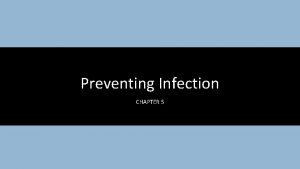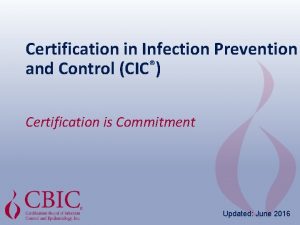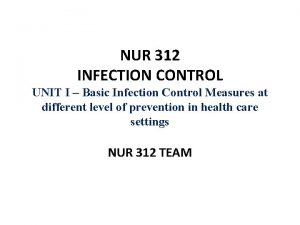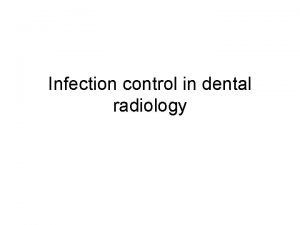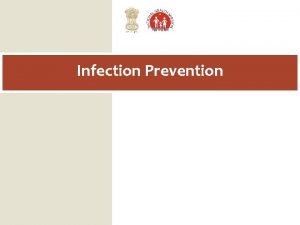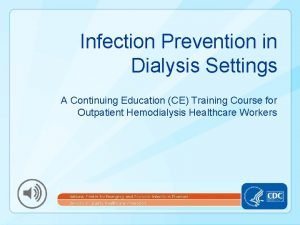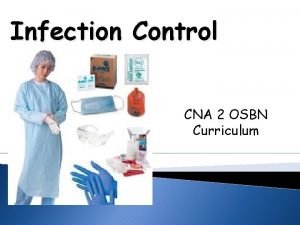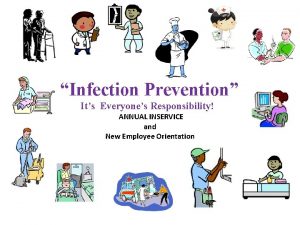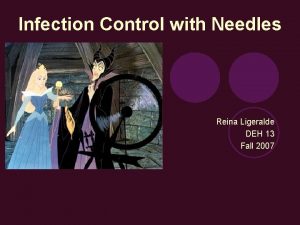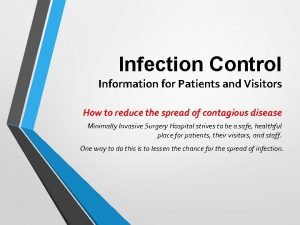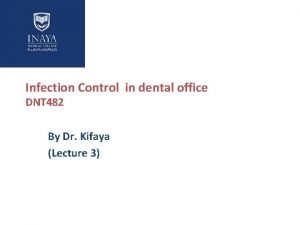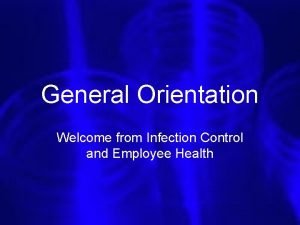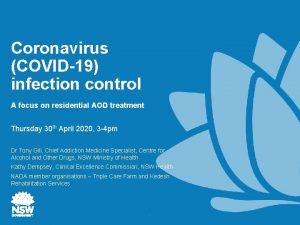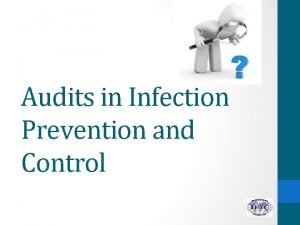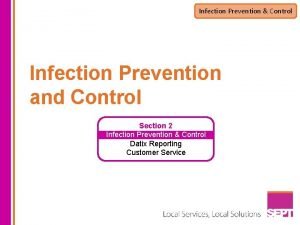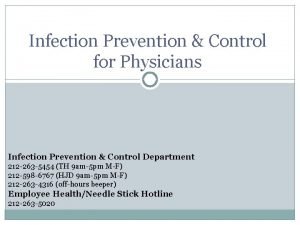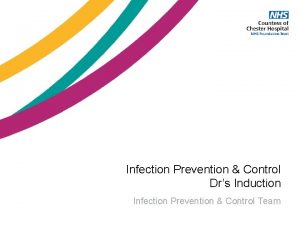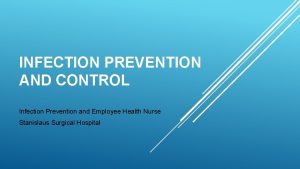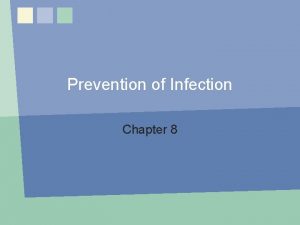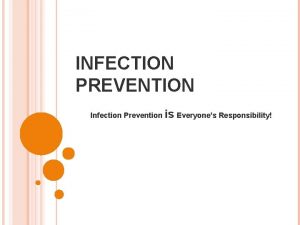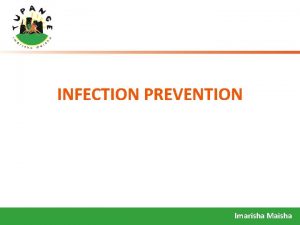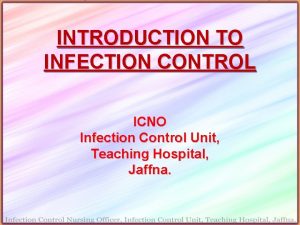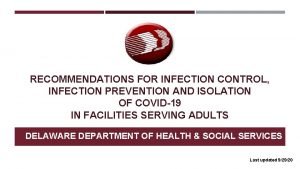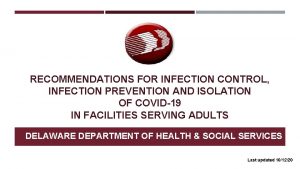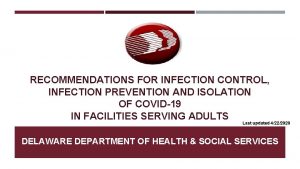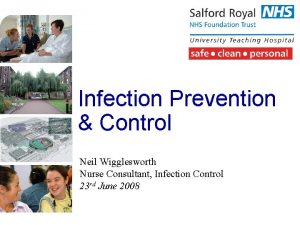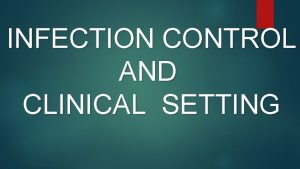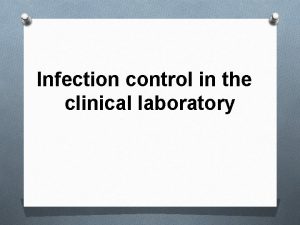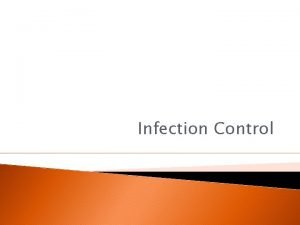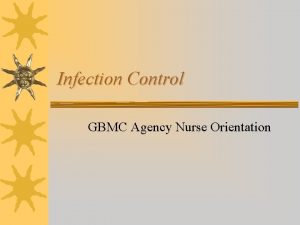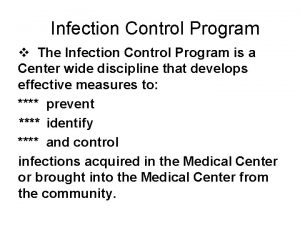Infection Prevention Control An introduction for new clinical

























- Slides: 25

Infection Prevention & Control An introduction for new clinical employees Contact the CDHB IP&C Service

The aim of infection prevention & control is to prevent patients, staff and visitors from acquiring an infection while receiving healthcare.

Achieving the Aim • Always use Standard Precautions • Use Transmission-based Precautions appropriately


Hand Hygiene is the single most important activity for preventing the spread of infection All health care workers are required to undertake the self e-learning package which describes the 5 Moments for Hand Hygiene

Personal Protective Equipment (PPE)




PPE Quiz – True or False • A surgical/procedural mask is required when taking a throat swab from a patient/client who has a respiratory illness? True or False? (Click for correct answer) TRUE

Transmission-based Precautions (Isolation Precautions) Standard Precautions • For all patients all of the time Transmission -based (Isolation) Precautions • When we know or suspect a patient has a microorganism spread by a certain route • Contact • Droplet • Airborne

Contact Precautions Used when in direct contact with patient or their environment e. g. MRSA, infectious diarrhoea, scabies Next Slide

Contact Precautions question Which of the following diseases are NOT spread through contact? c MRSA c Scabies c Pulmonary TB c Clostridium difficile

Droplet Precautions Used for diseases which generate large droplets which travel approx. 1 2 m then fall to the floor e. g. Influenza, Pertussis

Look how well a mask works Click for Next Slide

Droplet Precautions scenario and question • Mrs Jones has q You wear a influenza and is surgical/procedural being nursed in a mask single room. q Mrs Jones wears a • What personal surgical/procedural protective equipment mask is required when q You wear gloves and a inside her room? gown/apron

Airborne Precautions Used for diseases which are carried on small droplet nuclei suspended in the air e. g. Pulmonary TB, Chickenpox, Measles. Learn how to fit test your N 95 mask

Contact and Droplet • This sign is used when a patient presents with signs and symptoms that are spread via Droplet and Contact. • Use a combination of Contact and Droplet Precautions E. g. Influenza with diarrhoea, Norovirus

Multi-drug resistant organisms (MDRO) • ESBL-producing enterobacteriaceae • MRSA • Methicillin-resistant Staphylococcus aureus • VRE • Vancomycin-resistant E. faecium & E. faecalis • Other MDRO • Multi-drug resistant Acinetobacter species MDRO policy

MDRO screening

Placement of ESBL patients • Assessment tool for placement of patient with Extended Spectrum Beta Lactamase or ESBL • Based on risk factors for spread

Cleaning & Disinfection ü Cleaning requires detergent wipes or a detergent solution ü Disinfection requires use of a suitable disinfectant e. g. bleach solution or alcohol wipe ü Cleaning must always come before disinfection Cleaning & Disinfection Policies

Do you know how to clean patient equipment when discharged? Patient call bell Dyna. Map IV pump and stand Stethoscope Blood pressure cuff Bed frame and mattress ECG machine and leads

Blood and Body Fluid Exposures • Report all Blood Body Fluid Exposures (BBFE) • BBFE packs are in all clinical areas • Ensure your Hepatitis B immunisation is up-todate

Achieving Infection Prevention…. • Always use Standard Precautions – – Hand hygiene Cough and sneeze etiquette Personal protective equipment Safe sharps practice • Use Transmission-based Precautions appropriately
 Primary prevention secondary prevention tertiary prevention
Primary prevention secondary prevention tertiary prevention Chapter 16 infection control and standard precautions
Chapter 16 infection control and standard precautions Chapter 19 disease transmission and infection prevention
Chapter 19 disease transmission and infection prevention Chapter 19 disease transmission and infection prevention
Chapter 19 disease transmission and infection prevention Chapter 19 disease transmission and infection prevention
Chapter 19 disease transmission and infection prevention Define infection prevention chapter 5
Define infection prevention chapter 5 History of dental radiology ppt
History of dental radiology ppt Phenolic disinfectant are milady
Phenolic disinfectant are milady Chapter 16 infection control and standard precautions
Chapter 16 infection control and standard precautions Chapter 15:3 washing hands
Chapter 15:3 washing hands Chapter 15:8 using sterile techniques
Chapter 15:8 using sterile techniques Cic infection control
Cic infection control Infection control definition
Infection control definition Darkroom infection control guidelines
Darkroom infection control guidelines Learning objectives for infection control
Learning objectives for infection control Infection control conclusion
Infection control conclusion Cna infection control
Cna infection control Certification board of infection control and epidemiology
Certification board of infection control and epidemiology Infection control is everyone's responsibility
Infection control is everyone's responsibility Infection control
Infection control Infection control
Infection control Infection control information
Infection control information Root locus drawer
Root locus drawer Infection control orientation
Infection control orientation Infection control
Infection control Infection control audits
Infection control audits





